#b83
Explore tagged Tumblr posts
Text

10 notes
·
View notes
Text
Kominato Yotsuha 小湊よつ葉
1996年5月29日
Debut: 2022
T154 cm / B83 (C-cup) - W59 - H80
448 notes
·
View notes
Text


Luna Ichinose 一ノ瀬 瑠菜(いちのせ るな) 2007年2月26日 T157cm B83 W56 H84 推定Cカップ
209 notes
·
View notes
Text






Fujimoto Sara 藤本沙羅
生年月日 2003年8月2日
出身地 埼玉県
サイズ 身長162cm B83 W63 H87
特技=クラシックバレエ、歌うこと
○「ミスマガジン2022」審査員特別賞を受賞。現在はグラビアだけでなく、女優としても活躍中!
237 notes
·
View notes
Text










❤️🔥浅野ゆう子❤️🔥
プロフィール
生年月日: 1960年7月9日
出生地: 兵庫県神戸市
血液型: AB型
身長: 167cm
スリーサイズ: B83-W58-H88cm
カップサイズ: 推定C~Dカップ
#浅野ゆう子#yuko asano#asian mature#maturesexy#mature beauty#beautiful mature#hot asian babe#asian beauty#asian babe#asian goddess#sexy japanese#asian woman
24 notes
·
View notes
Note
How far would the effects of a nuclear explosion spread?
It is a multifaceted question because nuclear weapons come in all shapes and sizes. This means that they have different yields (the amount of energy released when the weapon detonates - the bigger the yield, the more damage it causes), different range (the maximum distance it can travel to reach its target), different delivery systems, different uses, targets etc.
Based on this, we can differentiate tactical and strategic nuclear weapons.
Tactical nuclear weapons are smaller, battlefield-focused weapons designed for localized use. They have lower yields and shorter ranges. Strategic nuclear weapons are high-yield, long-range and are designed for large-scale, global destructions. In simpler terms, a tactical nw is designed to win a battle and a strategic one is designed to win the whole war.
It's important to remember that the RF, the US and the UK have both strategic and tactical nuclear weapons.
Now, let's come back to your question. You asked "How far would the effects of a nuclear explosion spread?", so let's talk about the strongest strategic nw each country has (the RF, the US and the UK because I highly doubt that France will use one anytime soon)
Russia - Satan 2
The range is up to 18,000 kilometers, so it can reach virtually any target on our planet. The yield is up to 10 megatons, so consider millions of deaths. For comparison, the yield of "Little Boy" (the one used on Hiroshima) is estimated to have been 0,015 megatons. So, if used on a densely populated city, 5 to 7 million people could die instantly from the blast and heat, and many more would be exposed to radiation over time.
US – B83 Gravity Bomb
The range is up to 12,000 kilometers with the maximum yield of 1.2 megatons. Depending on the altitude, if detonated, it would create a lethal radiation zone from 5 to 10 kilometers. If detonated on a big and densely populated city, a 1.2 megaton bomb could kill 1 to 2 million people instantly from the blast and thermal radiation, and many more would get sick over time because of the radiation.
UK – Trident II D5 (this is a Submarine-Launched Ballistic Missile)
A single missile carries the maximum of 8 warheads, each with a yield of 100 kilotons, the total yield of a missile would be 800 kilotons (=0.8 megatons) If higher-yield warheads (475 kilotons each) were used, the total yield could reach several megaton levels, but the UK is known to use lower-yield warheads for strategic reasons (but who knows?)
The range is up to 12,000 kilometers. As I said, it is launched from submarines, so it can reach targets virtually anywhere in the world. A 475-kiloton warhead detonated on a city could kill 500,000 to 1 million people instantly, and many more would suffer from radiation effects over time.
I hope I didn't bore you to death - as you can see, I'm quite interested in this topic.
30 notes
·
View notes
Text
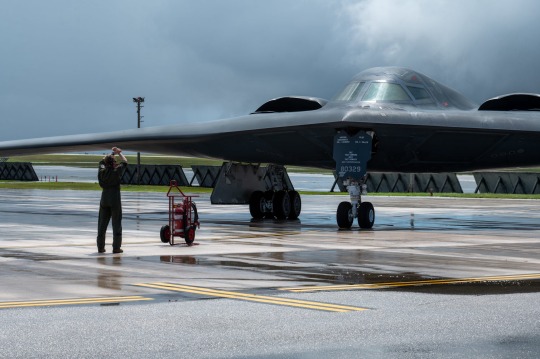
B-2 Gets Big Upgrade with New Open Mission Systems Capability
July 18, 2024 | By John A. Tirpak
The B-2 Spirit stealth bomber has been upgraded with a new open missions systems (OMS) software capability and other improvements to keep it relevant and credible until it’s succeeded by the B-21 Raider, Northrop Grumman announced. The changes accelerate the rate at which new weapons can be added to the B-2; allow it to accept constant software updates, and adapt it to changing conditions.
“The B-2 program recently achieved a major milestone by providing the bomber with its first fieldable, agile integrated functional capability called Spirit Realm 1 (SR 1),” the company said in a release. It announced the upgrade going operational on July 17, the 35th anniversary of the B-2’s first flight.
SR 1 was developed inside the Spirit Realm software factory codeveloped by the Air Force and Northrop to facilitate software improvements for the B-2. “Open mission systems” means that the aircraft has a non-proprietary software architecture that simplifies software refresh and enhances interoperability with other systems.
“SR 1 provides mission-critical capability upgrades to the communications and weapons systems via an open mission systems architecture, directly enhancing combat capability and allowing the fleet to initiate a new phase of agile software releases,” Northrop said in its release.
The system is intended to deliver problem-free software on the first go—but should they arise, correct software issues much earlier in the process.
The SR 1 was “fully developed inside the B-2 Spirit Realm software factory that was established through a partnership with Air Force Global Strike Command and the B-2 Systems Program Office,” Northrop said.
The Spirit Realm software factory came into being less than two years ago, with four goals: to reduce flight test risk and testing time through high-fidelity ground testing; to capture more data test points through targeted upgrades; to improve the B-2’s functional capabilities through more frequent, automated testing; and to facilitate more capability upgrades to the jet.
The Air Force said B-2 software updates which used to take two years can now be implemented in less than three months.
In addition to B61 or B83 nuclear weapons, the B-2 can carry a large number of precision-guided conventional munitions. However, the Air Force is preparing to introduce a slate of new weapons that will require near-constant target updates and the ability to integrate with USAF’s evolving long-range kill chain. A quicker process for integrating these new weapons with the B-2’s onboard communications, navigation, and sensor systems was needed.
The upgrade also includes improved displays, flight hardware and other enhancements to the B-2’s survivability, Northrop said.
“We are rapidly fielding capabilities with zero software defects through the software factory development ecosystem and further enhancing the B-2 fleet’s mission effectiveness,” said Jerry McBrearty, Northrop’s acting B-2 program manager.
The upgrade makes the B-2 the first legacy nuclear weapons platform “to utilize the Department of Defense’s DevSecOps [development, security, and operations] processes and digital toolsets,” it added.
The software factory approach accelerates adding new and future weapons to the stealth bomber, and thus improve deterrence, said Air Force Col. Frank Marino, senior materiel leader for the B-2.
The B-2 was not designed using digital methods—the way its younger stablemate, the B-21 Raider was—but the SR 1 leverages digital technology “to design, manage, build and test B-2 software more efficiently than ever before,” the company said.
The digital tools can also link with those developed for other legacy systems to accomplish “more rapid testing and fielding and help identify and fix potential risks earlier in the software development process.”
Following two crashes in recent years, the stealthy B-2 fleet comprises 19 aircraft, which are the only penetrating aircraft in the Air Force’s bomber fleet until the first B-21s are declared to have achieved initial operational capability at Ellsworth Air Force Base, S.D. A timeline for IOC has not been disclosed.
The B-2 is a stealthy, long-range, penetrating nuclear and conventional strike bomber. It is based on a flying wing design combining LO with high aerodynamic efficiency. The aircraft’s blended fuselage/wing holds two weapons bays capable of carrying nearly 60,000 lb in various combinations.
Spirit entered combat during Allied Force on March 24, 1999, striking Serbian targets. Production was completed in three blocks, and all aircraft were upgraded to Block 30 standard with AESA radar. Production was limited to 21 aircraft due to cost, and a single B-2 was subsequently lost in a crash at Andersen, Feb. 23, 2008.
Modernization is focused on safeguarding the B-2A’s penetrating strike capability in high-end threat environments and integrating advanced weapons.
The B-2 achieved a major milestone in 2022 with the integration of a Radar Aided Targeting System (RATS), enabling delivery of the modernized B61-12 precision-guided thermonuclear freefall weapon. RATS uses the aircraft’s radar to guide the weapon in GPS-denied conditions, while additional Flex Strike upgrades feed GPS data to weapons prerelease to thwart jamming. A B-2A successfully dropped an inert B61-12 using RATS on June 14, 2022, and successfully employed the longer-range JASSM-ER cruise missile in a test launch last December.
Ongoing upgrades include replacing the primary cockpit displays, the Adaptable Communications Suite (ACS) to provide Link 16-based jam-resistant in-flight retasking, advanced IFF, crash-survivable data recorders, and weapons integration. USAF is also working to enhance the fleet’s maintainability with LO signature improvements to coatings, materials, and radar-absorptive structures such as the radome and engine inlets/exhausts.
Two B-2s were damaged in separate landing accidents at Whiteman on Sept. 14, 2021, and Dec. 10, 2022, the latter prompting an indefinite fleetwide stand-down until May 18, 2023. USAF plans to retire the fleet once the B-21 Raider enters service in sufficient numbers around 2032.
Contractors: Northrop Grumman; Boeing; Vought.
First Flight: July 17, 1989.
Delivered: December 1993-December 1997.
IOC: April 1997, Whiteman AFB, Mo.
Production: 21.
Inventory: 20.
Operator: AFGSC, AFMC, ANG (associate).
Aircraft Location: Edwards AFB, Calif.; Whiteman AFB, Mo.
Active Variant: •B-2A. Production aircraft upgraded to Block 30 standards.
Dimensions: Span 172 ft, length 69 ft, height 17 ft.
Weight: Max T-O 336,500 lb.
Power Plant: Four GE Aviation F118-GE-100 turbofans, each 17,300 lb thrust.
Performance: Speed high subsonic, range 6,900 miles (further with air refueling).
Ceiling: 50,000 ft.
Armament: Nuclear: 16 B61-7, B61-12, B83, or eight B61-11 bombs (on rotary launchers). Conventional: 80 Mk 62 (500-lb) sea mines, 80 Mk 82 (500-lb) bombs, 80 GBU-38 JDAMs, or 34 CBU-87/89 munitions (on rack assemblies); or 16 GBU-31 JDAMs, 16 Mk 84 (2,000-lb) bombs, 16 AGM-154 JSOWs, 16 AGM-158 JASSMs, or eight GBU-28 LGBs.
Accommodation: Two pilots on ACES II zero/zero ejection seats.
21 notes
·
View notes
Text
学園の尻姫様 真宮みれい
学園の尻姫様 真宮みれいの詳細 発売日 : 2023-07-26 配信開始日 : 2023-11-03 出演者 : 真宮みれい レーベル : MARE メーカー : スパイスビジュアル ジャンル : 1stイメージ・デビュー作/グラビアアイドル/美女/水着/パンスト/セーラー服/ランジェリー/浴室/ピンヒール/HD(ハイビジョン) 作品紹介 大きなお尻が印象的な姫カットの原宿ショップ店員の真宮みれいちゃんの初イメージ作品。芸能会にあこがれてグラビアデビュー。●まみや・みれい/生年月日:1994年9月28日/サイズ:T167/B83(F)/W58/H92/出身地:千葉県/血液型:O型/趣味:野球観戦、カラオケ/特技:腰を剃るポージング / 学園の尻姫様 真宮みれい 詳細はこちら サンプル動画 もっと見る サンプル画像 もっと見る

View On WordPress
46 notes
·
View notes
Note
On a scale of Little Boy the bomb dropped on Hiroshima, Fat Man a nuke that stretches 8 km into the sky, B83 the most powerful weapon in the US nuclear arsenal equivalent to 1.2 mil tonnes of TNT, Castle Bravo the biggest nuke ever detonated by the US ever, and finally the Tsar Bomba, the most powerful nuke ever created and tested on earth equal to 50 million tonnes of TNT (but detonated at half its payload), where would you say dragons range? Thanks love your blog!
Smaller by a whole heck of a lot. Visenya was struck by a bow while performing draconic attacks, that puts a dragon's fire maximum range at roughly 1,000 feet if she was struck by one of the longest range longbows in existence (for the medieval time period). The fire is an incendiary, there is no detonation. This makes dragons far weaker than nukes, a testament to the awesome power of nuclear weapons.
Thanks for the question, Anon.
SomethingLikeALawyer, Hand of the King
12 notes
·
View notes
Text

Usui Rika 臼井リカ
Debut: 2024
1993年5月5日
T167 cm B83 (Cカップ) W56 / H85

134 notes
·
View notes
Text



Popochan ぽぽちゃん(Popo Hinano 雛乃ぽぽ) 1997年6月5日 T160cm B83 W56 H84 Fカップ
92 notes
·
View notes
Text




ミスマガジン2024の読者特別賞
尾茂井奏良 オモイソラ
生年月日●2009年3月6日
サイズ●T157 B83・W63・H92
出身地●広島県
趣味・特技●ギター、皿回し
74 notes
·
View notes
Note
The idea that it "doesn't matter which of" Israel or Palestine America invades is fucking ludicrous. Israel has enough nuclear weapons to wipe out all life on Earth and has precommitted to use them for that purpose if any superpower bothers them.
That is not even remotely true.
The Chicxulub asteroid that killed the dinosaurs but did not kill all life on Earth is estimated around 300 000 000 000 000 000 000 000 joules of impact power according to Wikipedia. Writing all those zeroes is troublesome, so let's use the exponential notation of 3E23.
The US has an arsenal of about 3000 (3E3) nuclear weapons and the currently most powerful is the B83 at 5 petajoules (5E15), pretend the entire arsenal is made of big ones, multiply those for 1.5E19. That's four orders of magnitude smaller.
Israel has even less than that.
9 notes
·
View notes
Text
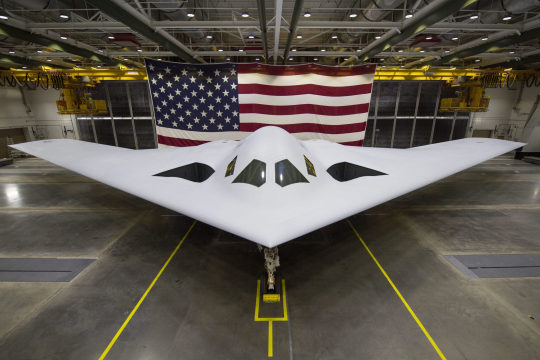
How many B-21 bombers will the U.S. need? Experts say more than 100
The U.S. Air Force originally wanted to build 80 to 100 bombers when the aircraft was first announced. But the world of 2023 is much more dangerous than the world of 2016.
Fernando Valduga By Fernando Valduga 12/13/2023 - 08:51am Military
The original number of bombers would have difficulty fulfilling conventional and nuclear missions in a great war.
The B-21 Raider bomber, which has been under secrecy since 2016, made its long-awaited first flight on November 10. Now that the bomber is really flying, it is worth asking: how many stealth bombers does the United States really need?
With China, Russia, Ukraine, Iran and North Korea dominating the headlines for one reason or another, the 80-100 bombers that the U.S. Air Force originally wanted to build now seem like a mere starting point.
The B-21 Raider bomber was announced in 2016 with great fanfare and should replace the B-1B Lancer bomber and the B-2A Spirit bombers. In 2023, the average age of the B-1B bomber fleet was 34.5 years, while the average age of the B-2A fleet was 27.35 years. Both bombers have been out of production for a long time, and the B-1B, in particular, suffers from maintenance problems, since the contractors who originally supplied spare parts are no longer on the market. There is also the issue that planes suffer from outdated technology that makes them less able to penetrate enemy airspace as originally intended: bomb a target and then flee.
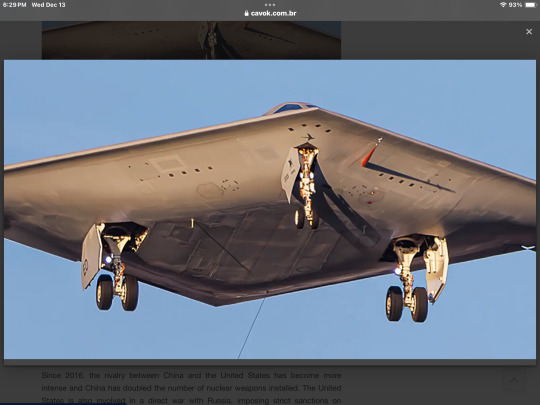
The B-21 will serve alongside the B-52J, an updated version of the B-52 Stratofortress bomber, 76 of which are still flying. The B-21 was originally designed as the penetrating bomber, while the B-52J was the non-penetrating bomber that could bomb targets in a permissive environment (think: Afghanistan or Iraq), or launch salvaes of long-range conventional or nuclear missiles beyond enemy radar and the range of air defense missiles.
Since 2016, the rivalry between China and the United States has become more intense and China has doubled the number of nuclear weapons installed. The United States is also involved in a direct war with Russia, imposing strict sanctions on Moscow as a result of its invasion of Ukraine; a new Cold War with Putin's Russia seems almost inevitable. At the same time, North Korea now has intercontinental ballistic missiles that can hit the United States, while Iran uses its representatives in the Middle East to attack American targets, while continuing its nuclear weapons program.
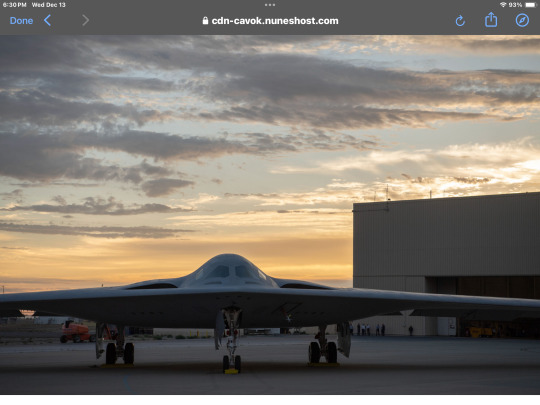
Throughout Europe, Asia and the Middle East, long-term peace prospects have not improved since 2016 – they have worsened substantially. Assuming that all this changes the strategic calculation and that we need more bombers, how many do we really need?
How many bombers for a nuclear war?
Let's examine the nuclear mission first. Many of the U.S. Air Force bombers perform conventional and nuclear functions. A B-2 bomber, for example, could launch JASSM-ER cruise missiles with conventional warheads against Chinese targets on a day and launch B83 gravitational thermonuclear bombs on Russian targets the next day. Still, only a subset of the U.S. Air Force heavy bomber force has a nuclear function: although all 20 existing B-2s have nuclear capability, none of the remaining 45 B-1B Lancer bombers and only 40 of the 76 B-52H bombers can carry nuclear weapons. This leaves 60 of the 141 bombers for nuclear missions.
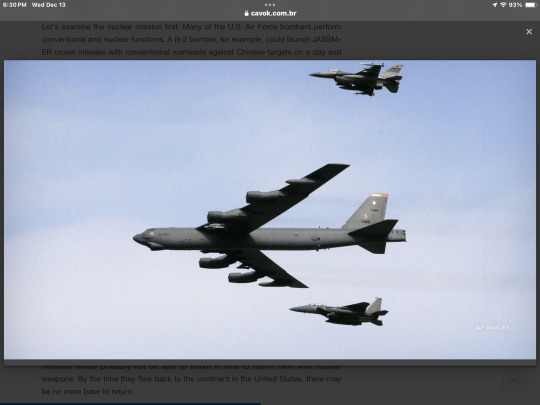
If the U.S. goes to war with Russia, or with China, or with Russia and China, it must contain a series of bombers and keep them on alert 24 hours a day, 7 days a week, armed with nuclear weapons and ready to fly. A conventional war between nuclear powers could quickly turn into a nuclear war, and bombers on conventional combat missions would probably not be able to return in time to rearm them with nuclear weapons. By the time they flew back to the continent in the United States, there may be no more base to return.
In 2023, Russia deployed 1,674 nuclear weapons, while China deployed about 410, and North Korea between 35 and 65. China is currently embarking on a nuclear construction that the Pentagon believes will raise the total number of nuclear weapons deployed to 1,500 by 2035. North Korea is probably expanding its nuclear arsenal, although, being a poor country, there will eventually be a limit to the number of weapons it can use at the same time.

Sixty nuclear-capable bombers is presumably the minimum number that the USAF considers necessary to face nuclear war scenarios involving Russia, China and North Korea. The U.S. Air Force should also consider the possibility, however small, that, at some point, it may be forced to fight Russia and China at the same time. If the Chinese arsenal increases by 66 percent, we may need a corresponding increase in the minimum number of bombers, in addition to a handful of extras. As a result, we may want to increase the number of nuclear-capacity bombers from 60 to 90, with all 40 B-52J and 50 B-21 placed on nuclear alert.
How many bombers for conventional warfare?
In a conventional war, Air Force bombers would be used as missile carriers, launching missiles against long-range enemy targets. All existing U.S. Air Force bombers - a total of 141 B-1, B-2 and B-52 - can perform conventional combat missions. Most of today's bombers, such as the B-52H and B-1B, are better off launching cruise missiles against enemy targets, while the B-2 can still penetrate enemy airspace.
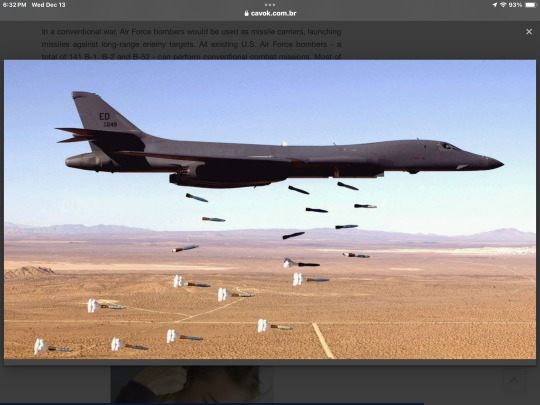
If we assume that the USAF replaces the B-1 bombers with B-21 bombers on a 1:1 basis, this gives us a need for 45 B-21. Once again, we may have to wage a conventional war against Russia and China at the same time or, at least, wage one while deterring the other. We could consider increasing the number of B-21 for conventional operations by 50%, giving us a total of 67 B-21.
This is not an excessively high number, but to launch a key in this, the U.S. Air Force also stated that the B-21 was built with other missions in mind, including intelligence, surveillance and reconnaissance missions, and electronic attack. Some studies predict it with a maritime attack role in Asia-Pacific, sowing minefields near mainland China and hunting Chinese navy warships. We could add ten more bombers per mission, totaling 97 B-21 for conventional missions.
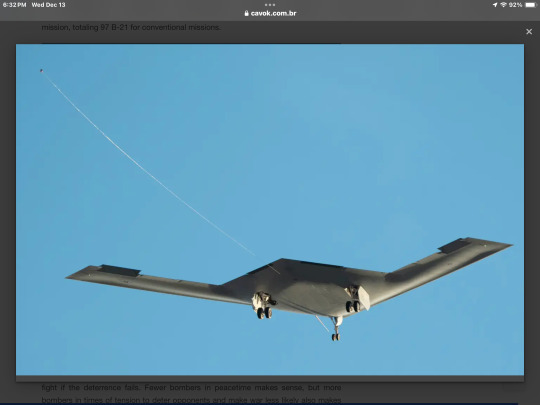
In total, our approximate calculations reveal that the U.S. should buy about 147 B-21 Raider bombers, plus 76 B-52J, for a total of 223 heavy bombers. This is significantly higher than the 80-100 B-21s launched when the bomber was first announced, but less than the 290 bombers that the U.S. Air Force intended to have at the end of the Cold War.
The conclusion
The world of 2023 is more dangerous than the world of 2016. The world of 2029, exactly when the first B-21 enter service, can be even more dangerous. The first mission of the bombers should be to stop the war; the second mission should be to fight if the deterrence fails. Fewer bombers in peacetime makes sense, but more bombers in times of tension to deter opponents and make war less likely also makes sense.
Source: Popular Mechanics
Tags: Military AviationB-21 RaiderUSAF - United States Air Force / U.S. Air Force
Sharing
tweet
Fernando Valduga
Fernando Valduga
Aviation photographer and pilot since 1992, has participated in several events and air operations, such as Cruzex, AirVenture, Dayton Airshow and FIDAE. He has work published in specialized aviation magazines in Brazil and abroad. Uses Canon equipment during his photographic work in the world of aviation.
Related news
ARMAMENTS
Taiwan expands F-CK-1 fighter arsenal with new missile
12/12/2023 - 22:46
MILITARY
RAF activates second F-35 squadron in Marham
12/12/2023 - 22:23
MILITARY
Safran partners with the Egyptian Air Force to improve the performance of the Rafale fleet
12/12/2023 - 16:00
HELICOPTERS
Airbus delivers two more H225M helicopters to the Hungarian Defense Forces
12/12/2023 - 14:00
MILITARY
VIDEO: Dutch Air Force performs last Elephant Walk with its F-16
12/12/2023 - 12:00
HELICOPTERS
Boeing guarantees contract for six MH-47G Chinook Block II helicopters
12/12/2023 - 09:00
25 notes
·
View notes
